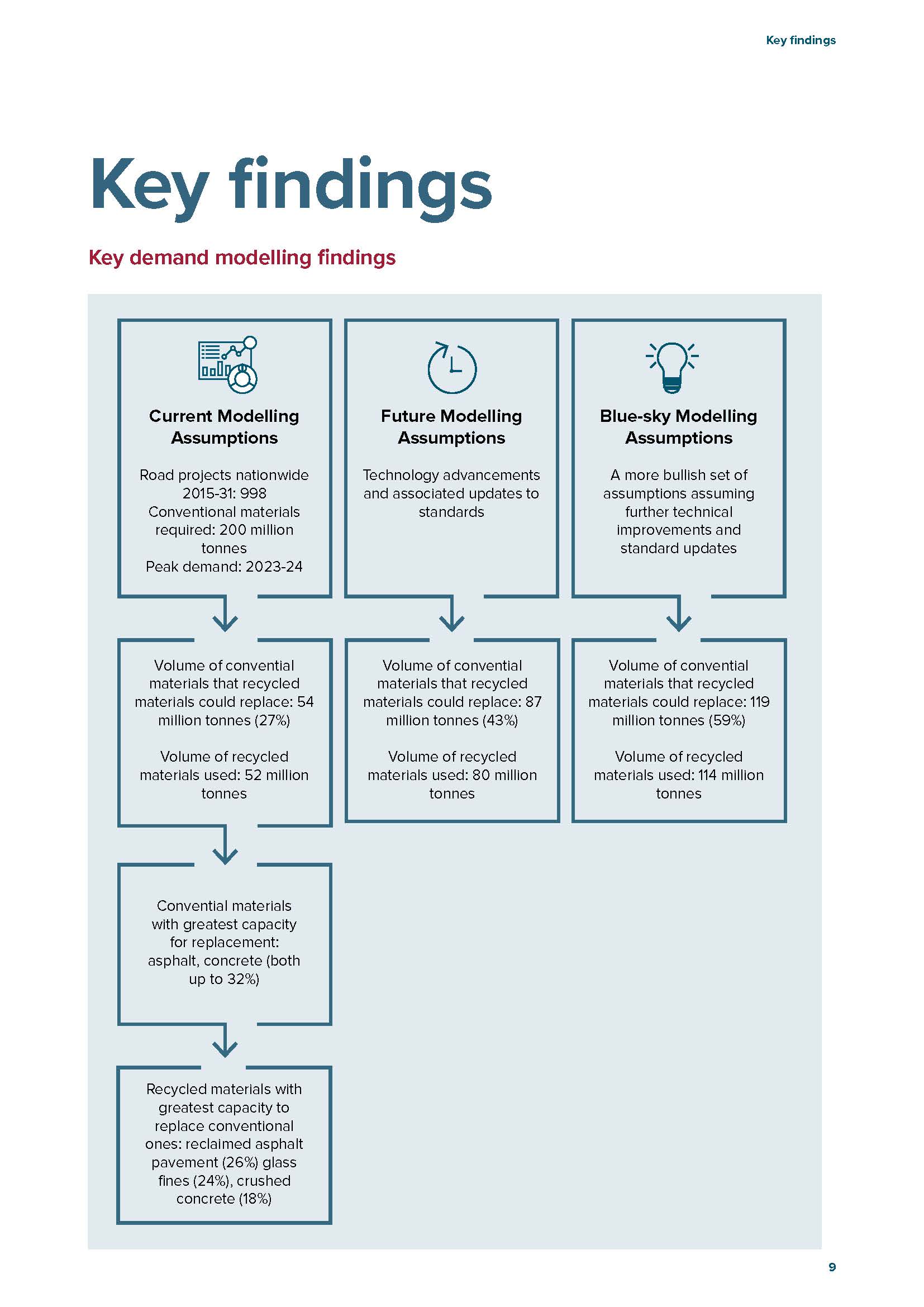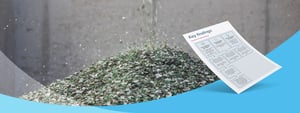Australia has an extensive road network covering over 877,000 km, presenting a unique opportunity to make use of recycled materials in road infrastructure.
ARRB in partnership with EY recently delivered the Replacement Materials report as part of Infrastructure Australia’s Market Capacity Program. The research delivers up-to-date estimates on the opportunity to use recycled materials in major infrastructure road projects.
In 2021, Infrastructure Australia reported that around $161 billion will be allocated to major transport projects over the next five years. Road infrastructure building and maintenance currently uses large volumes of construction materials each year, providing a major opportunity to the incorporation of recycled materials. This will in turn reduce landfill and progress towards a circular economy, where end-of-life materials are valued resources.

There is significant potential for replacing conventional materials with recycled materials. The scale of the replacement depends on technology, standards as well as market appetite and supply. Based on Infrastructure Australia’s central case conventional materials demand forecast, this report shows many findings including:
- Approximately 200 million tonnes of conventional materials are needed to deliver 998 road projects from across the country (From 2015–31).
- Over 95% of the mass is made up of five key materials: aggregates (29%), asphalt (27%), rock/bluestone (16%), sand (15%) and cement (9%).
- Based on current technology and standards, approximately 27% of the conventional material tonnage could be replaced by using a range of recycled materials. This means replacing approximately 54 million tonnes of conventional materials with approximately 52 million tonnes of recycled materials.
- The largest quantities of conventional materials that could be replaced are asphalt (32% of the replaceable conventional materials tonnage) and concrete (32%).
- With advancements in technology and the associated updates to standards, the tonnage of conventional materials replaced could rise from the current 27% to 43%. This could replace nearly 87 million tonnes of conventional materials with nearly 80 million tonnes of recycled materials.
- Based on blue-sky assumptions, the replacement rate could potentially further rise to 59%, replacing nearly 119 million tonnes of conventional materials with 114 million tonnes of recycled materials.
Recycled materials will have an important role to play in the future construction, rehabilitation, and maintenance of road infrastructure to help reduce waste, greenhouse gas emissions as well as our reliance on non-renewable resources. It will also support the development of a circular economy, with the potential to reduce short and long-term costs, improving network performance.
To read the full report, click here.
To find out how ARRB can assist you to incorporate recycled materials in your road infrastructure, visit: https://www.arrb.com.au/recycled-roads
